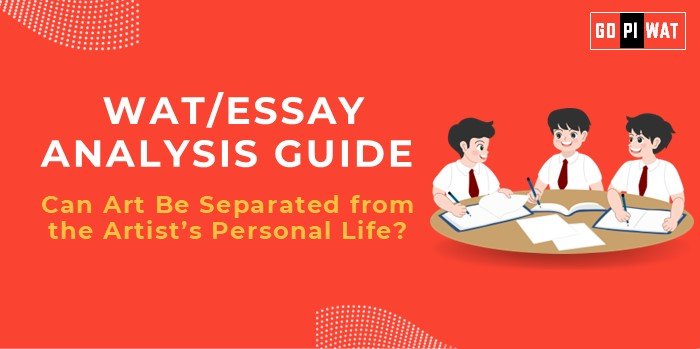📋 WAT/Essay Analysis Guide: Can Art Be Separated from the Artist’s Personal Life?
🌐 Understanding the Topic’s Importance
This question is pivotal for aspiring business leaders, emphasizing the balance between ethical judgment and value assessment, applicable in areas like branding and marketing.
⏳ Effective Planning and Writing
- Time Allocation:
- 📝 Planning: 5 minutes
- ✍️ Writing: 20 minutes
- 🔍 Review: 5 minutes
💡 Introduction Techniques for Essays
-
- Contrast Approach:
“While history celebrates Da Vinci’s art despite speculations about his life, modern artists face increasing scrutiny for personal controversies, blurring lines between creator and creation.”
-
- Solution-Based:
“Balancing appreciation for art with accountability for artists can promote both cultural enrichment and ethical integrity.”
📖 Structuring the Essay Body
- Achievements:
- ✅ Art’s timeless influence despite controversies, such as Beethoven’s personal struggles versus his musical genius.
- 🎨 Historical examples like Van Gogh, whose troubled life never diminished the value of his work.
- Challenges with Comparative Analysis:
- ⚠️ Ethical consumerism affecting art markets, questioning the morality of supporting controversial artists.
- 🌍 Global examples include the USA’s cancel culture versus France’s leniency for historic figures.
- Future Outlook:
- 📘 Advocating education to help audiences understand art contextually and separate personal flaws from artistic contributions.
- ⚖️ Encouraging platforms to balance ethics with artistic freedom to foster inclusive appreciation.
📄 Concluding Effectively
-
- Balanced Conclusion:
“Art’s intrinsic value may often surpass the flaws of its creator, but understanding the artist’s context can deepen appreciation and foster ethical responsibility.”
-
- Global Comparison:
“As different cultures navigate this debate, the future of art depends on balancing creative integrity with societal accountability.”
✍️ Sample Short Essays
-
- Balanced Perspective:
“Art has the unique power to transcend its creator, but dismissing the artist’s influence risks ignoring critical societal values. For instance, Van Gogh’s art stands timeless despite his troubled life, highlighting art’s enduring appeal beyond personal flaws.”
-
- Solution-Oriented:
“Promoting education around art’s context and ethical frameworks can foster a balanced appreciation, ensuring creative freedom and accountability coexist.”
-
- Global Comparison:
“From Picasso’s unchecked acclaim in Europe to Michael Jackson’s mixed legacy in the US, cultural nuances significantly shape how art and artists are perceived.”


